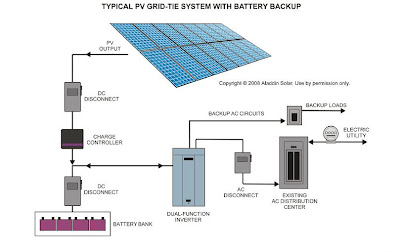Hybrid topology / double conversion on demand
These hybrid designs do not have an official designation, although one name used by HP and Eaton is double conversion on demand. This style of UPS is targeted towards high efficiency applications while still maintaining the features and protection level offered by double conversion.
A hybrid (double conversion on demand) UPS operates as an off-line/standby UPS when power conditions are within a certain preset window. This allows the UPS to achieve very high efficiency ratings. When the power conditions fluctuate outside of the predefined windows, the UPS switches to online/double conversion operation. In double conversion mode the UPS can adjust for voltage variations without having to use battery power, can filter out line noise and control frequency. Examples of this hybrid/double conversion on demand UPS design are the HP R8000, HP R12000, HP RP12000/3 and the Eaton BladeUPS.
Ferro-resonant
Ferro-resonant units operate in the same way as a standby UPS unit; however, they are online with the exception that a ferro-resonant transformer is used to filter the output. This transformer is designed to hold energy long enough to cover the time between switching from line power to battery power and effectively eliminates the transfer time. Many ferro-resonant UPSs are 82–88% efficient (AC/DC-AC) and offer excellent isolation.
The transformer has three windings, one for ordinary mains power, the second for rectified battery power, and the third for output AC power to the load.
This once was the dominant type of UPS and is limited to around the 150 kVA range. These units are still mainly used in some industrial settings (oil and gas, petrochemical, chemical, utility, and heavy industry markets) due to the robust nature of the UPS. Many ferro-resonant UPSs utilizing controlled ferro technology may not interact with power-factor-correcting equipment.
DC power
A UPS designed for powering DC equipment is very similar to an online UPS, except that it does not need an output inverter. Also, if the UPS's battery voltage is matched with the voltage the device needs, the device's power supply won't be needed either. Since one or more power conversion steps are eliminated, this increases efficiency and run time.
Many systems used in telecommunications use 48 VDC power, because it has less restrictive safety regulations, such as being installed in conduit and junction boxes. DC has typically been the dominant power source for telecommunications, and AC has typically been the dominant source for computers and servers.
There has been much experimentation with 48 VDC power for computer servers, in the hope of reducing the likelihood of failure and the cost of equipment. However, to supply the same amount of power, the current would be higher than an equivalent 115 V or 230 V circuit; greater current requires larger conductors, or more energy lost as heat.
Most PCs can be powered with 325 VDC. This is because most ATX switching power supplies convert the AC input voltage to approximately 325 VDC (230 × √2). On units with a voltage selector switch, the 115 V setting enables a voltage doubler that puts the top half of the AC wave in one capacitor, and the bottom half in the other capacitor. This mode uses half of the bridge rectifier and runs twice as much current through it. The 230 V setting simply rectifies the AC using the full bridge rectifier, and puts the it into both capacitors. These two capacitors are hardwired in series.These power supplies can almost always be safely run on 280-340 VDC long as the selector is in the 230 V position. They will not work at all with DC power in the 115 V position; with 162 VDC applied, nothing will happen because only one capacitor is being charged; if 325 V is applied, you will blow the fuse and a surge suppressor or capacitor. Power supplies with Active-PFC are usually Auto-ranging and have no voltage selector switch. They usually have one input capacitor, it is charged to 320-400 VDC by a boost-mode power supply that is part of the PFC circuit. It is uncertain how various Auto-ranging and Active-PFC power supplies will respond to having DC power applied when they are expecting AC 50–60 Hz power. A laptop computer is a classic example of a PC with a DC UPS built in.
High voltage DC (380 V) is finding use in some data center applications, and allows for small power conductors, but is subject to the more complex electrical code rules for safe containment of high voltages.









